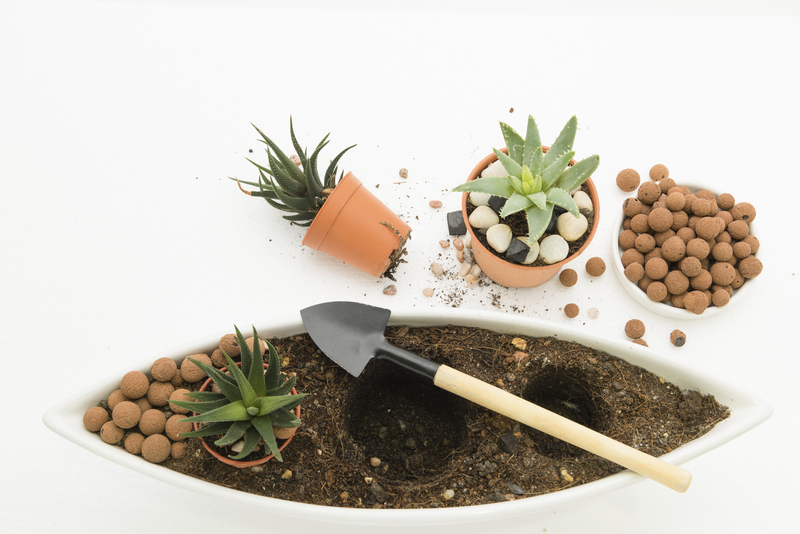The Importance of Aerating Your Lawn
Posted on 23/06/2025
A lush, green lawn is often considered the hallmark of a well-maintained home. Yet, achieving that perfect turf requires more than just regular mowing and watering. One critical maintenance activity that is often overlooked by many homeowners is lawn aeration. Lawn aeration is the process of perforating the soil with small holes to allow air, water, and nutrients to penetrate the grassroots. This article delves into the importance of aerating your lawn and how it can make a significant difference in your lawn's health and appearance.
Understanding Lawn Aeration
Aeration is a lawn care practice designed to create channels through which air, water, and nutrients reach the roots of your grass. This process is essential for alleviating soil compaction, promoting healthy root growth, and enhancing the overall vitality of your lawn. There are several types of aeration, including core aeration, spike aeration, and liquid aeration. Each method has its pros and cons, but core aeration is generally considered the most effective for most lawns.

Benefits of Lawn Aeration
The benefits of aerating your lawn are numerous and can be seen both in the short term and long term. Here are some of the primary advantages:
Alleviates Soil Compaction
Soil compaction is a common problem that restricts the flow of essential elements to the grassroots. Over time, foot traffic, mowing, and even rainfall can compact the soil, making it difficult for the roots to grow deep. Aeration breaks up the compacted soil, providing a more favorable environment for root development.
Improves Water Absorption
A compacted lawn often results in water runoff and pooling. Aerating helps to create porous soil that can effectively absorb water. This leads to less water wastage and ensures that moisture reaches deep into the root zone, where it is needed the most. Proper water absorption also minimizes the risk of lawn diseases caused by excessive moisture.
Enhances Nutrient Uptake
Nutrient-rich soil is crucial for the health of your lawn. Aeration allows fertilizers and organic matter to penetrate deeper into the soil, facilitating better nutrient uptake. This ensures that the grass receives the essential nutrients it needs to grow lush and green.
Promotes Root Growth
Healthy roots are the backbone of any thriving lawn. Aeration helps to break up the thatch layer, a dense mat of organic material that can suffocate roots and block nutrients. By doing so, it encourages roots to grow deeper and stronger, making your lawn more resilient to environmental stresses.
When and How to Aerate Your Lawn
Understanding the best time to aerate your lawn is crucial for maximizing the benefits. Generally, the optimal time for aeration depends on the type of grass you have. Cool-season grasses like Kentucky bluegrass and fescue should be aerated in the early spring or fall. Warm-season grasses like Bermuda and zoysia are best aerated in late spring or early summer.
The Aeration Process
The aeration process involves several steps that should be carefully followed for the best results. Here's a step-by-step guide:
- Mow Your Lawn: Start by mowing your lawn to a shorter length than usual. This makes it easier to handle the aeration equipment and ensures that the holes penetrate deeply.
- Water the Lawn: Water your lawn one or two days before aerating. This softens the soil, making it easier to perforate. Avoid waterlogging, as excessively wet soil can cause the aerator to clog.
- Choose Your Aeration Method: Depending on the size of your lawn and your specific needs, you can choose between core aeration, spike aeration, or liquid aeration. Core aeration, which involves removing plugs of soil, is the most effective for most lawns.
- Aerate in Multiple Directions: For even coverage, run the aerator across your lawn in multiple directions. This ensures that you create enough holes to facilitate proper air, water, and nutrient penetration.
- Overseed and Fertilize: After aerating, consider overseeding and fertilizing your lawn. The holes created by the aeration process provide an excellent environment for seeds and fertilizer, promoting better growth.
Signs Your Lawn Needs Aeration
While regular aeration is beneficial, it's crucial to identify specific signs that indicate your lawn is in desperate need of aeration. Here are some indicators:
Poor Water Drainage
If you notice that water pools on your lawn after a storm or watering session, it's a clear sign that the soil is compacted and needs aeration. Proper aeration will improve drainage and prevent waterlogging.
Thin or Patchy Grass
Compacted soil restricts root growth, resulting in thin or patchy grass. If your lawn looks unhealthy despite regular watering and fertilizing, aeration can help to rejuvenate it by promoting better root development.
Excess Thatch
A thick layer of thatch can choke your lawn and prevent essential nutrients from reaching the roots. If the thatch layer is more than half an inch thick, it's time to aerate your lawn. Aeration helps to break up the thatch and improve nutrient flow.

Tools and Equipment for Aeration
The right tools and equipment can make the aeration process more manageable and effective. Here are some of the commonly used aeration tools:
Core Aerators
Core aerators are the most effective tools for lawn aeration. They remove plugs of soil, allowing air, water, and nutrients to reach deep into the root zone. These can be manual or powered, depending on the size of your lawn.
Spike Aerators
Spike aerators use solid tines to poke holes in the soil. While they are easier to use, they are less effective than core aerators and can sometimes compact the soil further. They are best suited for small lawns with minor compaction issues.
Liquid Aerators
Liquid aerators use chemical solutions to break down compacted soil and improve air and water flow. They are easy to apply but may not be as effective as mechanical aeration methods for severely compacted soil.
Conclusion
Aerating your lawn is a vital aspect of lawn care that should not be overlooked. It alleviates soil compaction, improves water and nutrient absorption, and promotes healthy root growth. By understanding the benefits and following the correct aeration process, you can ensure that your lawn remains lush, healthy, and resilient. Regular aeration, combined with proper watering, mowing, and fertilizing, will help you achieve the beautiful lawn you've always desired.
Invest the time and effort in aerating your lawn, and you will reap the rewards of a vibrant and thriving outdoor space that enhances the beauty and value of your home.




